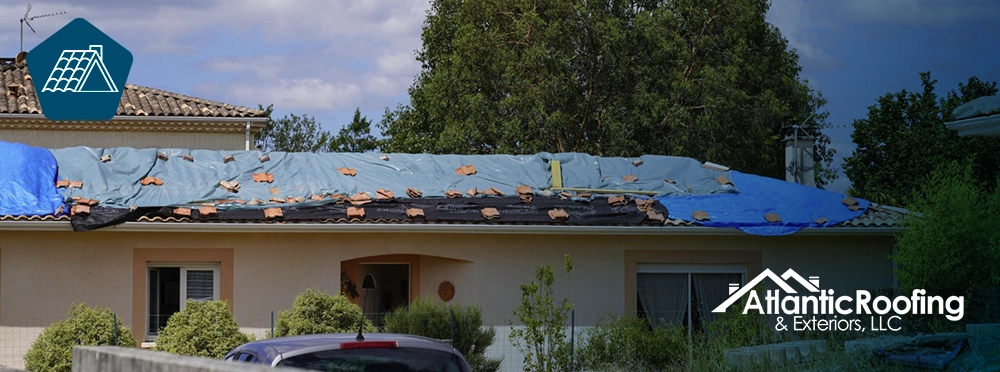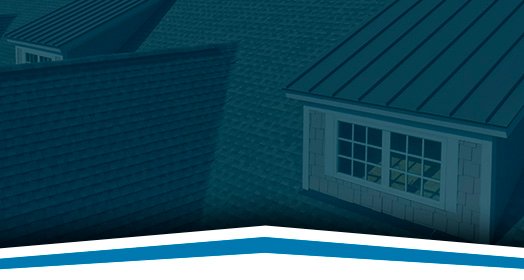
How to Identify Signs of Roof Damage After a Storm
Table of Contents
Introduction
Extreme weather conditions can seriously affect and even damage your home’s roof. Strong winds, hail, heavy rain, or even snow and ice can cause different types of roofing issues and, while some of them are obvious, others can remain hidden until they escalate to major problems. After a storm strikes, it's crucial to, as soon as possible, make a careful inspection on your roof to ensure its structural integrity hasn't been compromised. Delaying repairs can lead to different problems such as water damage and mold growth, resulting in more costly repairs down the line.
Next, we’ll guide you through the key factors and signals that will help you identify the signs of roof damage after a storm, including what to look for both inside and outside your home, and when professional help may be necessary for a deep inspection.
The Importance of Addressing Storm Damage
Your roof serves as the first line of defense against the external elements. Even the smallest damage can escalate into serious problems when not timely and properly addressed. That’s how a small puncture or tear can cause leaks, which in turn can compromise insulation, affect ceilings and walls, and damage personal belongings. In some cases, storm damage can even weaken the structure of your roof, making it vulnerable to collapse under additional stress.
The sooner you identify and address roof damage, the better protected your property and finances will be.
Safety First: Why Caution is Important
Before starting checking for roof damage, prioritize your safety. Don’t climb onto the roof yourself especially if it’s wet, steep, or structurally unstable. Keep in mind that many signs of damage can be seen from the ground or in the attic and you can also use binoculars. If you suspect significant damage or are unsure, the best you can do is contacting a roofing professional to perform a full inspection.
Step-by-Step Roof Damage Inspection Guide
Ground-Level Inspection
Begin your inspection from the safety of your yard or driveway. Walk around the perimeter of your home and look for the following signs:
a. Shingles on the Ground
Strong winds or hail can dislodge shingles from your roof. If you see whole shingles or fragments scattered around your property, that’s a clear indication that parts of your roof have been affected.
b. Debris Accumulation
Check for branches, leaves, or other debris that may have hit your roof during the storm. Large debris can crack or puncture roofing materials besides hiding underlying damage.
c. Visible Sagging
Inspect the roofline for any signs of sagging, which may be a clear sign of water accumulation or even structural weakness.
Examining the Roof Surface (Safely)
By using a good pair of binoculars, you can safely check the surface of the roof to identify less obvious damage such as:
a. Missing or Damaged Shingles
Look for shingles that are curled, cracked, torn, buckled or missing granules (you might notice bare spots). These allow water to penetrate the underlayment and cause interior damage.
b. Flashing Damage
Flashing is the metal material that surrounds chimneys, vents, skylights, and roof edges to lead water away. For that reason, bent, missing, or lifted flashing can leave your roof vulnerable to leaks.
c. Hail Damage
Hail impacts often leave behind dents or dimples, especially on asphalt shingles that may look like small bruises or dark spots. This damage is not immediately visible and can seriously compromise the shingle's integrity.
Checking Gutters and Downspouts
Your home’s drainage system is another critical factor to take proper care of your roof’s health. That’s why it is crucial to check for:
a. Granule Buildup
The presence of granules from asphalt shingles in your gutters or downspouts is another sign that indicates the shingles are deteriorating. Hail and heavy rainstorms can damage the protective granules, reducing the shingle’s lifespan.
b. Clogged or Bent Gutters
Debris buildup, visibly bent or detached sections of your gutter system can indicate storm damage. If water isn’t being properly leaded away from the roof and foundation, it can cause additional problems.
Inspecting the Attic and Ceilings Inside Your Home
Taking into account that damage doesn’t always appear on the roof’s exterior and often reveals itself inside your home, it is crucial to check for signs such as:
a. Water Stains
Brown or yellow water stains on the ceiling or walls are common signs of a roof leak. Right after a storm, check rooms directly under the roof.
b. Mold or Mildew Odors
Persistent musty smells could indicate hidden water damage. Moisture in your attic or insulation promotes mold growth, which poses not only structural, but also health risks.
c. Light Penetration
Turn off the lights in your attic during the day and look for sunlight coming through the roof boards. Even the smallest crack that allows light to come in, can also let in water, so this is a good indicator of damage.
Checking for Structural Issues
An intense storm may also cause structural damage. To timely identify it you should watch for:
a. Cracked Rafters or Trusses
Strong winds or falling debris can crack the supporting beams of your roof over time. This problem should be addressed immediately to avoid collapse.
b. Uneven Roof Planes
If one part of your roof seems to have settled or shifted compared to the rest, it could indicate structural damage.
Special Considerations for Different Roofing Materials
Depending on the type of roof you have, damage may appear in different ways such as:
- Asphalt Shingles: Granule loss, tearing, or curling.
- Metal Roofing: Dents, rust, and loose panels.
- Tile Roofing: Cracked, chipped, or displaced tiles.
- Flat Roofs: Pooled water, punctures, or bubbling in the roofing membrane.
Documenting Damage for Insurance Claims
Take clear photos and notes of all the damage you can find. This documentation will be invaluable when filing an insurance claim. Include:
- Date and time of the storm
- Photos from multiple angles
- Descriptions of what you’ve observed
You should also keep copies of any repair invoices and professional assessments.
Call a Professional Roofer for an Inspection
Even if you don’t notice major issues after a severe storm, the best you can do is call a certified roofer for a full and deep inspection. Professionals have the expertise and the equipment to:
- Find and assess hidden damage
- Check for compromised underlayment or insulation
- Identify future risks before they escalate
Many roofing companies offer free or low-cost storm damage inspections.
File a Home Insurance Claim If Necessary
If your roof has suffered important damages, contact your homeowner's insurance provider as soon as possible. Most policies cover storm-related roof damage as long as the claims are filed within a certain time frame.
To file your claim you must:
- Check your policy
- Contact your insurer to start a claim
- Submit your documentation
- Coordinate with your insurance adjuster and roofing contractor
Conclusion
Taking Proper Care of Your Roof After a Storm
Your roof is a critical component of your property. It protects you from the elements and helps to regulate indoor temperature, something especially important for residents of areas with extreme weather conditions like Alachua County, Bradford County, Marion County, Levy County, Gilchrist County, Union County, Clay County and Putnam County in Florida. After a storm strikes, identifying and addressing roofing damage quickly can save you from more problems and expensive repairs down the line.
Remember that even when everything looks fine at first glance, storm damage isn’t always visible right away. If you feel unsure, ask the opinion from a professional roofing contractor to ensure your home remains safe and protected.
See more posts 


